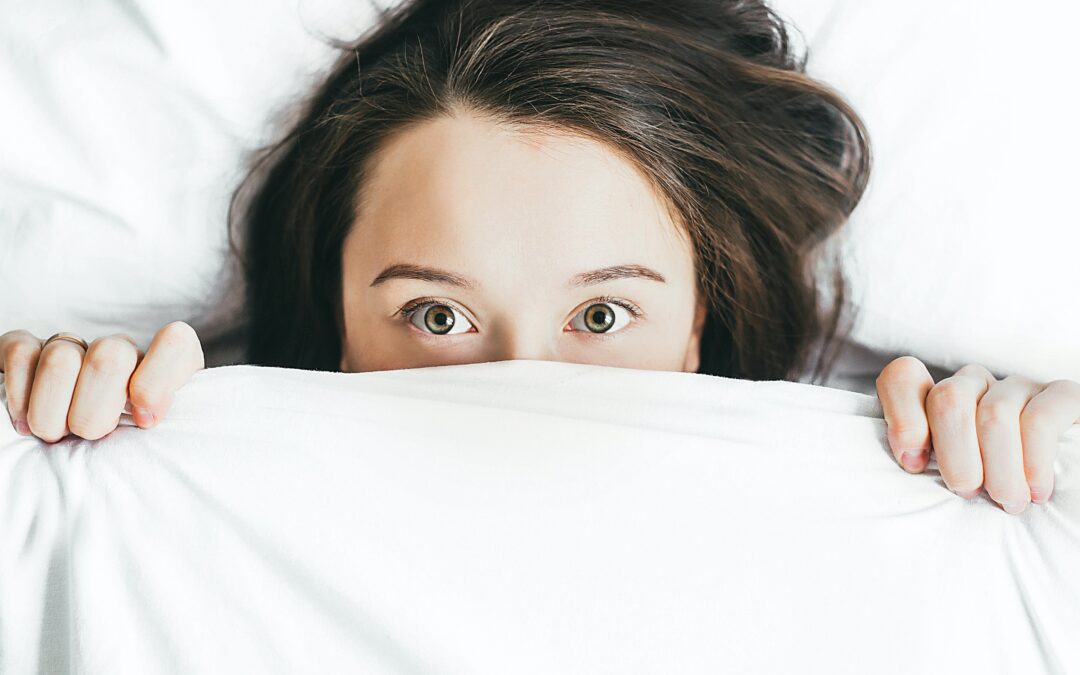This universe is operating by finely tuned time cycles, and your body is no different. Consider this: there is a yearly cycle of 365 days, a monthly cycle that reoccurs 12 times a year, a weekly cycle of 7 days, and a daily cycle comprised of hours, minutes, and seconds. What would happen if these cycles were off? Not only would you have a difficult time figuring out your next dentist appointment, but our world’s entire ecosystems and life-giving properties would be affected. Your body has a paramount time cycle as well—the circadian rhythm.
The Circadian Rhythm – A Brief Introduction
This rhythm is your body’s clock to inform you when it is time to wake, eat, and sleep. It also affects other factors such as gene expression (also known as epigenetics), blood sugar, blood pressure, liver function, and many other body actions (1). When this cycle is off, it can lead to an increased risk for heart disease, cancer, and diabetes. The circadian rhythm is so closely connected with your health that some have linked it as a possible underlying cause of metabolic syndrome (1). For the purpose of this article, we will only be exploring the role it plays in our sleep cycle.
The Role of Melatonin
Have you ever tried marching to an out of sync beat? If you’ve graduated to the tune of Pomp and Circumstance or had the glorious moment of being escorted down the aisle as a bride, your feet likely kept beat with the song. When the drummer misses a beat and the trumpets come in late, however, the whole song is ruined.
For humans, the most efficient, restful, and restorative sleep occurs when the sleep cycle is closely aligned with the circadian night (2). Melatonin, responsible for our sleep and wake cycle, plays a crucial part in the function and timing of our circadian rhythm.
Here’s the low-down on how this hormone is created: it is secreted by the pineal gland, a kernel of corn sized gland in our brains. To produce melatonin throughout the night, your brain needs some ingredients: tryptophan, calcium, vitamin D, and vitamin B-6, as well as complete darkness when sleeping (3). Your pineal gland transforms the tryptophan into serotonin and then, with the help of the latter ingredients, into melatonin. As you can see, there are a lot of factors to consider in the production of melatonin!
“For humans, the most efficient, restful, and restorative sleep occurs when the sleep cycle is closely aligned with the circadian night.”
— Killgore
Getting the Right Ingredients
1. Get More Natural Light Exposure: Sunshine is a great way to skip a step in the process of melatonin production and store up serotonin directly. Try going for a walk during the brightest, most convenient part of your day. By doing this you will not only absorb sunshine, but you will reap the additional benefits of light exercise!
2. Try Blue Light Therapy: This is a beneficial alternative if you are unable to get outside during daylight hours (because, let’s be honest, the winter months are relentless). Indirectly shining a 10,000-lux blue or white light box angled 45 degrees for at least 30 minutes every morning before 7 a.m. will increase secretion of serotonin (4). This practice not only improves sleep, but mood and general productivity as well (5). Light therapy can also assist in reestablishing a regular circadian rhythm cycle. Read more on light therapy, it’s uses, and benefits here.
3. Avoid Artificial Light Exposure Before Bed: While blue light is beneficial in the early parts of the day, if used improperly, it can adversely affect your sleep cycle. Using screens, such as a phone or television, directly before bed will upset your circadian rhythm. The blue light produced from these devices, as mentioned above, is stimulating and consequently reduces the quality of our sleep and our melatonin production capabilities before bed (6).
4. Consume Foods High in Tryptophan, Calcium, and Vitamin B-6: Tofu, sesame seeds, many dark greens, and sweet bell peppers are just a few of the many foods essential in the conversion of serotonin to melatonin. More menu options and valuable foods—check out the list here.
5. But Don’t Eat Before Bed: Eating a meal or snack soon before retiring to bed is shown to decrease the quality of your sleep and raise blood glucose levels (7). This is because melatonin stops the secretion of insulin by the pancreas, and without insulin, the sugar (glucose) cannot enter the cells. Fasting 3-5 hours before bed will keep your pineal gland active and give your stomach time to digest so it’s not working later into the night.
6. Eliminate Stimulants: Whether due to convenience or honest addiction, many people rely on stimulants on a day to day basis. These products, however, may be the culprits to insomnia or other sleep disorders. Caffeine triggers the body’s stress hormone system and tends to weaken melatonin production. Using caffeine will cut melatonin production in half for 6 hours (8). Drinking alcohol will reduce secretion by up to 41 percent (9). Smoking or using tobacco diminishes the production capabilities of the pineal gland. This may partially explain why sleeping complications are side-effects of smoking (10).
7. Get Moving! Moderate to vigorous intensity exercise was discovered as a non-pharmacological approach to improve sleep in insomniacs11. Though often it takes a long-term commitment before significant results in sleep quality are seen, some effects were noticed in shorter periods of exercise as well. When is the best time to exercise? One 2020 study found the results and benefits of getting sweaty in the morning may be superior to afternoon exercise (12). Honestly, though, the time of day you can consistently commit to is the best time.
8. Moderate Use of Medications: Some medications can also block the production of melatonin. To produce melatonin, your sympathetic nervous system must be functioning; this system can be impaired by different drug medications. Medications such as haloperidol and chlorpromazine prevent the conversion of serotonin to melatonin (9). Propranolol and other Beta-blockers have been shown to significantly decrease melatonin secretion by blocking the stimulation of the pineal gland when in the dark (13). When this occurs, even when all the conditions seem right to produce melatonin, your brain does not get the message that it is time to produce the hormone. Nonsteroidal anti-inflammatory drugs like ibuprofen have also been proven to decrease the pineal gland’s secretion of melatonin (14). These drugs are frequently used for pain and headaches. While helpful and necessary on occasion, they are better used less frequently. Ironically, even sleeping drugs, including the benzodiazepines and psychiatric drugs, will decrease melatonin production (15).
Sleep is essential to life and bodily function (16). There is a distinct association between sleep quantity, quality, cognitive achievement, physical performance, and general well-being (17). Insufficient sleep and insomnia, on the other hand, lead to future morbidity and mortality (18). Consequently, getting a handle on enhancing sleep is paramount (19). The natural, non-pharmacological methods mentioned above will help improve quality and quantity of sleep for people with insomnia. If you or someone you know struggles with insomnia, be assured that there are natural, cheaper, more trustworthy methods in regaining that regenerative rest.
A Side Note: While supplements are touted on the market, may studies do not support taking melatonin supplements due to the lack of testing requirements for purity (20), accuracy on quantity, and potential long-term adverse effects (8).
Disclaimer: Sleep apnea, narcolepsy, and a delayed sleep phase may require a sleep test to help further. If these natural restorative methods don’t bring relief, please talk to a medical professional.
References
1. Zimmet, P., Alberti, K. G., Stern, N., Bilu, C., El‐Osta, A., Einat, H., & Kronfeld‐Schor, N. (2019). The Circadian Syndrome: Is the Metabolic Syndrome and much more! Journal of Internal Medicine. doi:10.1111/joim.1292.
2. Killgore, W. D., Vanuk, J. R., Shane, B. R., Weber, M., & Bajaj, S. (2020). A randomized, double-blind, placebo-controlled trial of blue wavelength light exposure on sleep and recovery of brain structure, function, and cognition following mild traumatic brain injury. Neurobiology of Disease, 134, 104679. doi:10.1016/j.nbd.2019.104679
3. Nedley, N. (1999). Melatonin. In DeRose D., Proof Positive: How to Reliably Combat Disease and Achieve Optimum Health through Nutrition and Lifestyle (pp. 193-210). Ardmore, OK: Neil Nedley, M.D.
4. Rao M.L., Muller-Oerlinghausen B, et al. (1990). The influence of phototherapy on serotonin and melatonin in non-seasonal depression. Pharmacopsychiatry, 23(3), 155-158.
5. Laakso M.L., Porkka-Heiskanen T., et al. (1988). Twenty-four-hour patterns of pineal melatonin and pituitary and plasma prolactin in male rats under ‘natural’ and artificial lighting conditions. Neuroendocrinology, 48(3), 308-313.
6. Lewy A.J., Wehr T.A., et al. (1980). Light suppresses melatonin secretion in humans. Science, 210(4475), 1267-1269.
7. Patrick, R. (2019, April 2). Late-night eating and melatonin may impair insulin response. Retrieved from https://www.foundmyfitness.com/episodes/melatonin-insulin-response
8. Reiter R.J., & Robinson J. (1995). Drugs That Deplete Melatonin. Melatonin: Your Body’s Natural Wonder Drug (pp. 188). New York, N.Y.: Bantam Books.
9. Erlich S.S., & Apuzzo M.L. (1985). The pineal gland: anatomy physiology, and clinical significance. J Neurosurg, 63(3), 321-341.
10. Touitou Y., Fevre-Montange M., et al. (1985). Age- and sex-associated modification of plasma melatonin concentrations in man. Relationship to pathology malignant or not, and autopsy findings. Acta Endocrinol (Copenh), 108(1), 135-144.
11. Chennaoui, M., Arnal, P., Sauvet, F., & Léger, D. (2015). Sleep and exercise: A reciprocal issue?. Sleep Medicine Reviews, 20, 59-72. http://dx.doi.org/10.1016/j.smrv.2014.06.008
12. Carlson, L. A., Pobocik, K. M., Lawrence, M. A., Brazeau, D. A., & Koch, A. J. (2019). Influence of Exercise Time of Day on Salivary Melatonin Responses. International Journal of Sports Physiology and Performance, 14(3), 351-353. doi:10.1123/ijspp.2018-0073
13. Schlager D.S. (1994). Early-morning administration of short-acting beta blockers for treatment of winter depression. Am J Psychiatry, 151(9), 1383-1385.
14. Childs P.A., Rodin, et al. (1995). Effect of fluoxetine on melatonin in patients with seasonal affective disorder and matched controls. Br J Psychiatry, 166(2), 196-198.
15. McIntyre I.M., Burrows G.D., & Norman T.R. (1988). Suppression of plasma melatonin by a single dose of the benzodiazepine alprazolam in humans. Biol Psychiatry, 24(1), 108-112.
16. Anaclet, C., & Fuller, P. (2017). Brainstem regulation of slow-wave-sleep. Current Opinion in Neurobiology, 44, 139-143. http://dx.doi.org/10.1016/j.conb.2017.04.004.
17. Tononi, G., & Cirelli, C. (2014). Sleep and the price of plasticity: From synaptic and cellular homeostasis to memory consolidation and integration. Neuron, 81(1), 12–34. http://dx.doi.org/10.1016/j.neuron.2013.12.025
18. Kovacevic, A., Mavros, Y., Heisz, J., & Fiatarone Singh, M. (2018). The effect of resistance exercise on sleep: A systematic review of randomized controlled trials. Sleep Medicine Reviews, 39, 52-68. http://dx.doi.org/10.1016/j.smrv.2017.07.002
19. Rosekind, M., Gregory, K., Mallis, M., Brandt, S., Seal, B., & Lerner, D. (2010). The cost of poor sleep: Workplace productivity loss and associated costs. Journal of Occupational and Environmental Medicine, 52(1), 91-98. http://dx.doi.org/10.1097/jom.0b013e3181c78c30
20. The Medical Letter (1995). Melatonin. The Medical Letter, 27(962), 111-112.

